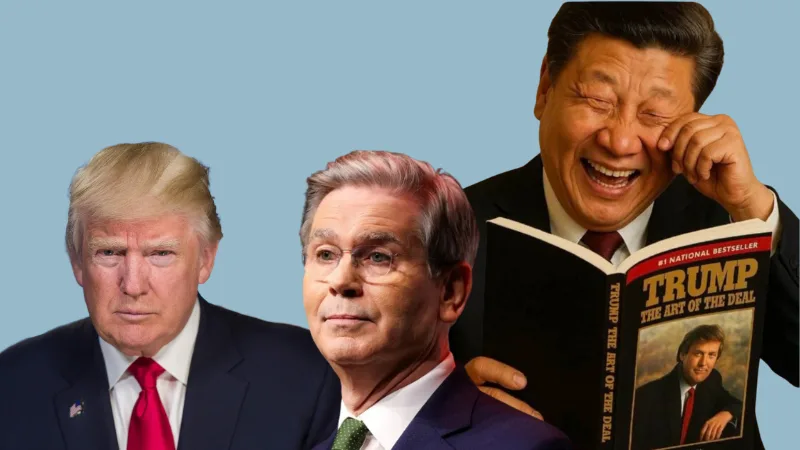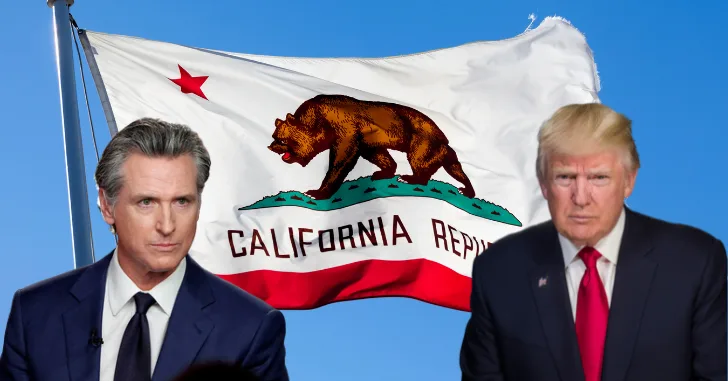In a market already battered by inflation concerns, tariff battles are once again rearing their head — and investors should be paying close attention.
Over the weekend, President Donald Trump claimed that the United States and China had re-engaged in trade negotiations regarding tariffs. But in a sharp rebuke, China swiftly denied that any talks were taking place, throwing cold water on the possibility of near-term de-escalation between the world’s two largest economies.
For investors, the gap between rhetoric and reality isn’t just political noise — it has real implications for stock prices, commodity markets, supply chains, and global economic growth.
Here’s what’s happening, what’s at stake, and how investors should think about positioning now.
Conflicting Claims: Trump vs. China
During an interview with Time magazine, President Trump said that Chinese President Xi Jinping had contacted him recently to discuss tariff issues:
“President Xi called me recently, and we’re talking. Good conversations, very positive,” Trump told Time (source).
However, the Chinese government immediately contradicted Trump’s statement.
Guo Jiakun, spokesperson for China’s Foreign Ministry, stated bluntly:
“There was no such call,” (source).
In addition, Commerce Ministry spokesperson He Yadong reinforced the message:
“No consultations or discussions are currently taking place regarding tariffs.” (source).
The direct contradiction has fueled investor confusion at a time when markets are already deeply sensitive to any shifts in U.S.-China relations.
The Current U.S.-China Tariff Landscape
Despite the talk, reality on the ground is clear: tariffs are at their highest levels since the start of the original trade war.
- The United States has slapped tariffs of up to 145% on certain Chinese imports.
- China has retaliated with tariffs up to 125% on U.S. goods (source).
The sectors most impacted are:
- Technology: critical components and electronics face surcharges.
- Agriculture: U.S. farmers are seeing reduced access to China’s market.
- Manufacturing: input costs for machinery, metals, and chemicals have jumped.
The tariff battle isn’t just about economics — it’s a power struggle over supply chains, geopolitical influence, and future global leadership.
Why It’s Different This Time
Unlike earlier trade tensions, the economic backdrop in 2025 is fundamentally different.
Scott Bessent, U.S. Treasury Secretary, added fuel to the fire when he publicly contradicted President Trump’s assertions:
“I am unaware of any ongoing tariff negotiations with China,” Bessent told reporters, adding that the current tariff regime is “unsustainable for China’s business model” (source).
Meanwhile, China has shifted its domestic policy response:
- Beijing plans to support businesses hurt by tariffs with targeted aid programs.
- Authorities are encouraging entrepreneurship to offset lost export revenue.
- The government remains committed to a 5% GDP growth target for 2025, despite trade friction (source).
This isn’t 2018 or 2019 anymore. Both sides are digging in deeper — and both are more economically prepared for a prolonged fight.
Why Investors Should Care
There are four major reasons investors must pay attention to this growing standoff:
1. Supply Chains Are Still Fragile
Global companies have spent years trying to diversify away from Chinese manufacturing, but many still rely heavily on it.
Higher tariffs could raise production costs for tech companies, automakers, and retailers.
2. Consumer Prices Could Rise
New tariffs will likely mean higher costs for everyday goods, from smartphones to sneakers. Inflation, already stubborn, could get a fresh boost.
3. Stock Market Volatility Will Increase
Markets hate uncertainty.
Expect heightened volatility — especially in sectors like tech, retail, and industrials — as investors react to every headline.
4. Recession Risks Rise
If tariffs spiral further, the combination of higher consumer prices, corporate margin pressure, and weaker global trade could tip the U.S. or world economy into recession.
Investment Strategies to Consider
Amid this rising risk environment, investors should stay defensive — but not paralyzed.
Here are smart moves to consider:
1. Favor Domestic-Focused Companies
Businesses that primarily serve U.S. consumers and source domestically are better insulated. Think:
- U.S. regional banks
- Utilities
- Local service providers
2. Look at Nearshoring Winners
Companies helping firms move production out of China — especially to Mexico or Southeast Asia — could benefit.
Examples include logistics companies, construction firms, and industrial REITs.
3. Own Some Hard Assets
Historically, commodities like gold and industrial metals perform well during trade disruptions.
Adding a small allocation to precious metals can hedge portfolio volatility.
4. Be Cautious With China-Heavy Tech Stocks
Big names with major China exposure — especially in semiconductors and consumer electronics — face potential earnings downgrades.
Approach these holdings carefully and be ready to reduce exposure if tensions escalate further.
Expect More Noise — But Stay Focused
It’s clear: despite President Trump’s optimistic framing, China and the United States are not on the verge of a tariff truce.
In fact, the gulf between political statements and ground reality is widening — and that’s a recipe for ongoing market turbulence.
Investors must stay vigilant, not reactive.
By focusing on domestically insulated sectors, hard assets, and avoiding high-risk exposures, portfolios can weather the uncertainty while staying positioned for eventual opportunities.
Remember: real negotiations move markets — not headlines.
Until there’s hard proof of true talks, assume tariffs are here to stay — and invest accordingly.





